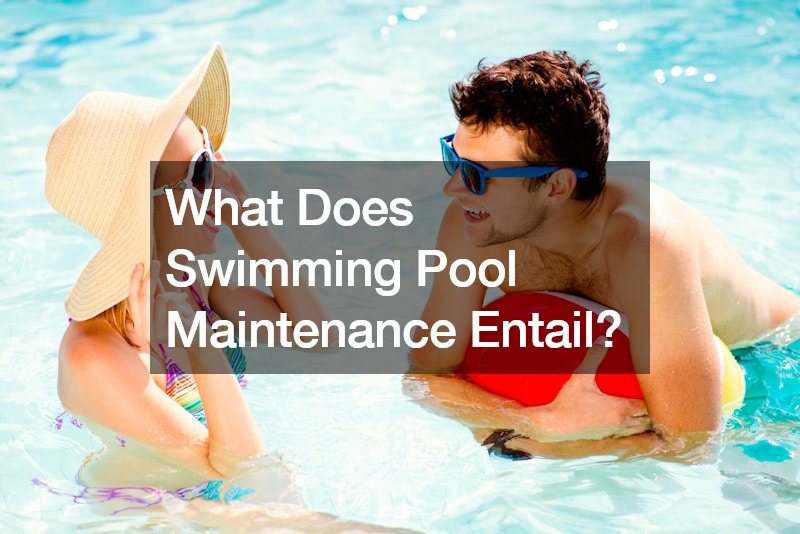
Swimming pool maintenance is a comprehensive process that ensures the cleanliness, safety, and functionality of the pool. Proper maintenance involves a series of regular tasks and checks to keep the water clear, the equipment in good working order, and the pool safe for swimmers. Here’s an overview of what swimming pool maintenance entails:
Water Quality Management
The foundation of pool maintenance is managing the water quality, which involves balancing chemical levels to ensure the water is safe and comfortable for swimming. This includes:
pH Levels: The pH of the pool water should be maintained between 7.
2 and 7.8 to prevent skin and eye irritation and to ensure the effectiveness of sanitizing chemicals.
Sanitizers: Chlorine or bromine is commonly used to kill bacteria and algae. The sanitizer levels must be regularly checked and adjusted to maintain optimal concentrations.
Alkalinity: Total alkalinity acts as a buffer for pH, preventing drastic changes. It should be kept within the range of 80-120 ppm.
Calcium Hardness: This prevents water from becoming too soft or too hard, which can lead to corrosion or scale buildup, respectively. The ideal range is 200-400 ppm.
Cyanuric Acid: Used to stabilize chlorine, preventing it from breaking down quickly due to sunlight. The recommended level is 30-50 ppm.
Cleaning and Skimming
Keeping the pool clean involves removing debris and contaminants that can affect water quality and the performance of the filtration system. This includes:
Skimming: Using a net to remove leaves, insects, and other debris from the water surface daily.
Brushing: Brushing the walls and floor of the pool to prevent algae buildup and to dislodge dirt that the vacuum can then remove.
Vacuuming: Using a pool vacuum to clean the pool floor and sometimes the walls, either manually or with an automatic pool cleaner.
Filtration System Maintenance
The filtration system is critical for keeping the pool water clean by removing small particles and contaminants. Maintenance tasks include:
Backwashing: Reversing the flow of water through the filter to clean it. This is typically done weekly for sand or DE filters.
Cleaning or Replacing Filters: Cartridge filters need to be cleaned periodically and replaced as needed to ensure efficient operation.
Inspecting Pump and Motor: Checking the pump and motor for proper operation, lubricating moving parts, and ensuring there are no leaks.
Regular Inspections
Regular inspections help identify and address potential issues before they become major problems. This involves:
Checking for Leaks: Inspecting the pool and plumbing for any signs of leaks.
Inspecting Pool Equipment: Regularly checking the condition of ladders, diving boards, and pool covers for safety and functionality.
Monitoring Water Levels: Ensuring the water level is appropriate, typically halfway up the skimmer opening, to allow the pump and filter to operate efficiently.
Seasonal Maintenance
Seasonal maintenance includes preparing the pool for periods of heavy use, like summer, or for closing during the winter. This involves:
Opening the Pool: Removing covers, reconnecting equipment, cleaning, and balancing chemicals.
Winterizing the Pool: Lowering water levels, adding winterizing chemicals, and covering the pool to protect it from debris and freezing temperatures.



